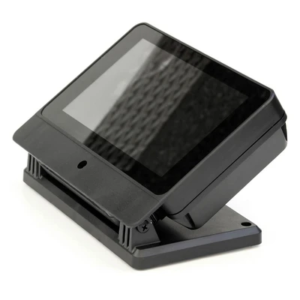Denmark, we are told, has sent an ambassador to Silicon Valley. Ignoring the fact that in a data first world, the idea of physically embedding an individual in a place famed for it’s technology, seems an anachronism (the parties must be staggering good though), this has some rather scary precedent in terms of science fiction.
I’m currently re-reading Peter F Hamilton’s Night’s Dawn trilogy, a set of doorstop plus sized space operas that were written in the late 90’s. Hamilton has the rare skill of being able to write face paced stories as well as being pretty on the nail with some of his predictions of where things will go.
By the time he wrote the Night’s Dawn trilogy, Hamilton had already written the Mindstar books, set in a Britain recovering from the damages suffered during ten years of “Marxist-Maoist” dictatorship under the People’s Socialist Party and also the ravages of global warming and collapsing financial markets. I hate so sound pessimistic but that sounds an awful lot like a very possible potential future right now as the Tory party seeks to make itself completely unelectable for at least a generation and a couple of backbench Marxists lead the opposition. Rutland, where a chunk of the books are set, is full of floating villages, with houses on pontoons, and is probably pretty close to where we’re heading now. Impressively prescient for 1993 eh?
Which brings us on to the Danish and the attempts of a smaller country to somehow influence the tech giants of Silicon Valley. In context, Silicon Valley is in California, which has the 5th largest economy in the world (4th if you exclude America, which it’s a part of). California’s GDP is around $3 trillion, against Demarks $351 billion. They’re not even close.
In the Night’s Dawn trilogy, which is set significantly further along the human timeline than the Mindstar books, Hamilton’s human race in peril story has numerous factions and organisations (which is why the final volume, at 470,000 words, is probably the second longest single binding book I’ve read after Tad William’s To Green Angel Tower which weighs in at a ludicrous 564,000 words), spanning Adamists, Edenists, Navies, secret police and special forces and the mysterious B7, a secret police like organisation that looks after Earth’s best interests.
In the final volume we find out that B7 is a consortium of incredibly wealthy individuals whose “financial institutions own a healthy percentage of the human race”. B7 have guided human decision making since the late 21st century, helping to found Earth’s centralised government, embedded themself and their legal aides into every strata of administration and governance on the planet.
Basically, in the mid to late 90’s, Hamilton had decided where Silicon Valley was going, and although the names of Larry Page and Sergi Brin (Google, founded 1998), Elon Musk and Peter Theil (Paypal, founded 1998) and Jeff Bezos (Amazon, founded 1994) wouldn’t have been known to many back then, now is an entirely different story. Throw in Zuckerberg and you’ve got a full set. Two of these Silicon Valley men now operate space exploration companies in SpaceX and Blue Origin, and all of the companies they set up are global entities that governments are finding it increasingly difficult to regulate, let alone rein in.
I still have a soft spot for Hamilton’s work, even if the amount of sex and nymphomania in his earlier books has aged rather badly, the works still stand up to scrutiny and in my opinion, the speculative part of his fiction, the world’s he creates, the motivations behind them, have always been sorely underestimated.
After all, the new Ambassador to Silicon Valley has this to say on his role:
“What has the biggest impact on daily society? A country in southern Europe, or in Southeast Asia, or Latin America, or would it be the big technology platforms? Our values, our institutions, democracy, human rights, in my view, are being challenged right now because of the emergence of new technologies.These companies have moved from being companies with commercial interests to actually becoming de facto foreign policy actors.”
 My Kindle goes with me everywhere. I spend a lot of time at work (and at home) in front of a computer, so the e-ink screen on the Kindle gives my eyes a rest when I want to read a book. However I have had to factory reset my Kindle twice in the last few months. My wifi Kindle lost it’s wifi connection- it wouldn’t see any wifi networks and didn’t show a MAC address in the settings. This meant I could read the books on it but I couldn’t add any other books or read a book on multiple devices and sync my progress.
My Kindle goes with me everywhere. I spend a lot of time at work (and at home) in front of a computer, so the e-ink screen on the Kindle gives my eyes a rest when I want to read a book. However I have had to factory reset my Kindle twice in the last few months. My wifi Kindle lost it’s wifi connection- it wouldn’t see any wifi networks and didn’t show a MAC address in the settings. This meant I could read the books on it but I couldn’t add any other books or read a book on multiple devices and sync my progress.









